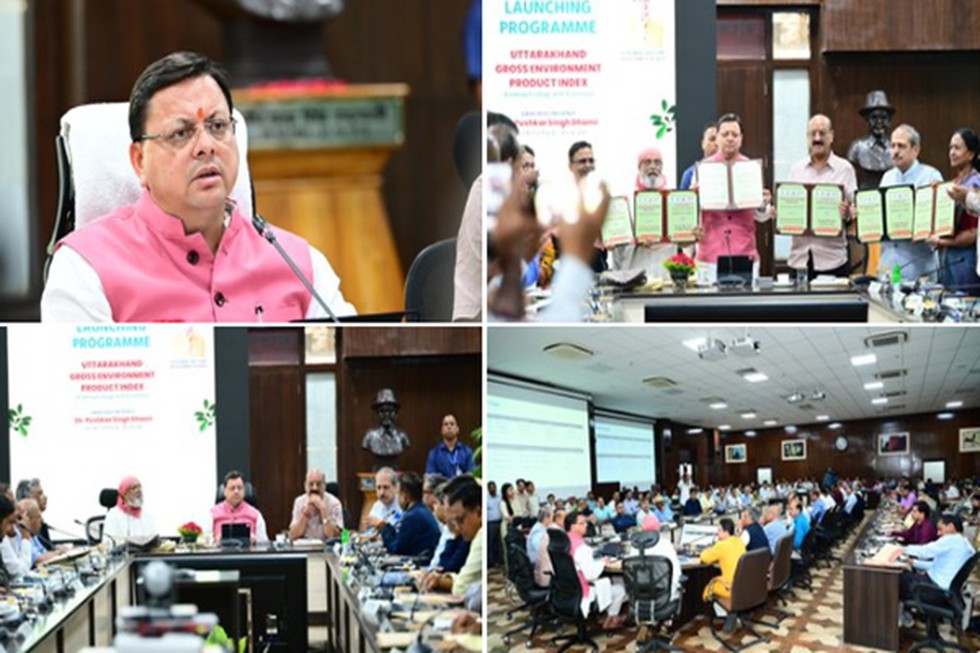Uttarakhand has made history by becoming the first state in India and the world to launch a Gross Environment Product (GEP) Index. This groundbreaking metric goes beyond traditional ecosystem services by incorporating both what we derive from and contribute to the environment.
Development of the GEP Index
Anil Prakash Joshi, founder of the Himalayan Environmental Studies and Conservation Organisation, spearheaded the creation of this index. Joshi aimed to develop a formula as understandable as the Gross Domestic Product (GDP) formula.
Key Components of the GEP Index
The GEP Index is built on four pillars:
- Air
- Soil
- Tree
- Water
The formula for calculating the GEP Index is: GEP Index=(Air-GEP Index+Water-GEP Index+Soil-GEP Index+Forest-GEP Index)\text{GEP Index} = (\text{Air-GEP Index} + \text{Water-GEP Index} + \text{Soil-GEP Index} + \text{Forest-GEP Index})GEP Index=(Air-GEP Index+Water-GEP Index+Soil-GEP Index+Forest-GEP Index)
Methodology
- Forest Measurement: The index not only counts trees but also evaluates them based on type, survival rate, and the number felled. This approach aims to refine current satellite-based forest cover calculations.
- Water Measurement: It includes both natural water recharge and human-made conservation methods, such as the creation of amrit sarovars.
Advantages and Conceptual Insights
Joshi argues that GEP allows for a comparison between economic output and environmental contributions, such as the quality and quantity of soil created. This metric quantifies the benefits provided by ecosystems, which include:
- Provisioning: Food, water, and timber
- Regulating: Climate regulation and flood control
- Supporting: Soil formation and nutrient cycling
- Cultural: Recreational and spiritual benefits
Vir Singh, Professor Emeritus at GB Pant University, notes that GEP provides a valuable measure by translating diverse ecosystem services into a monetary value, reflecting the true worth of natural capital.
Criticisms and Concerns
Not everyone supports the GEP Index. Critics argue that:
- Simplistic Approach: Hemant Dhyani of the Ganga Avahan movement suggests that activities should be categorized into prohibited, regulated, and promoted. He believes that simply accounting for positive contributions without considering the full impact can lead to significant ecological damage.
- Scientific Rigor: Some environmental experts question the scientific robustness of the GEP formula. Concerns have been raised about its acceptance based on limited publication and unclear methodology.
Future Prospects
Environmental scientist Vishal Singh expresses doubts about the GEP’s application on a national scale, questioning how states with different environmental contexts will adapt the index. Despite these concerns, Uttarakhand Chief Minister Pushkar Singh Dhami supports the GEP Index, but its practical implementation remains uncertain.
Multiple-Choice Questions (MCQs):
- What is the primary innovation of Uttarakhand’s Gross Environment Product (GEP) Index?
- A) It measures only air quality.
- B) It calculates only ecosystem services.
- C) It assesses both environmental contributions and withdrawals.
- D) It focuses solely on water conservation.
- Which of the following is NOT a pillar of the GEP Index?
- A) Air
- B) Soil
- C) Tree
- D) Land
- What is the formula for calculating the GEP Index?
- A) GEP Index = Air-GEP Index – Water-GEP Index + Soil-GEP Index + Forest-GEP Index
- B) GEP Index = (Air-GEP Index + Water-GEP Index – Soil-GEP Index + Forest-GEP Index)
- C) GEP Index = (Air-GEP Index + Water-GEP Index + Soil-GEP Index + Forest-GEP Index)
- D) GEP Index = Air-GEP Index + Water-GEP Index + Soil-GEP Index – Forest-GEP Index
- Which criticism is mentioned regarding the GEP Index?
- A) It lacks an economic component.
- B) It is seen as overly simplistic and may ignore broader ecological impacts.
- C) It exclusively focuses on soil quality.
- D) It is too complex to understand.
- What is one of the benefits of the GEP Index according to Vir Singh?
- A) It exclusively measures the economic output of forests.
- B) It reflects the true value of natural capital by quantifying ecosystem services.
- C) It only assesses water conservation efforts.
- D) It measures the number of trees planted.
